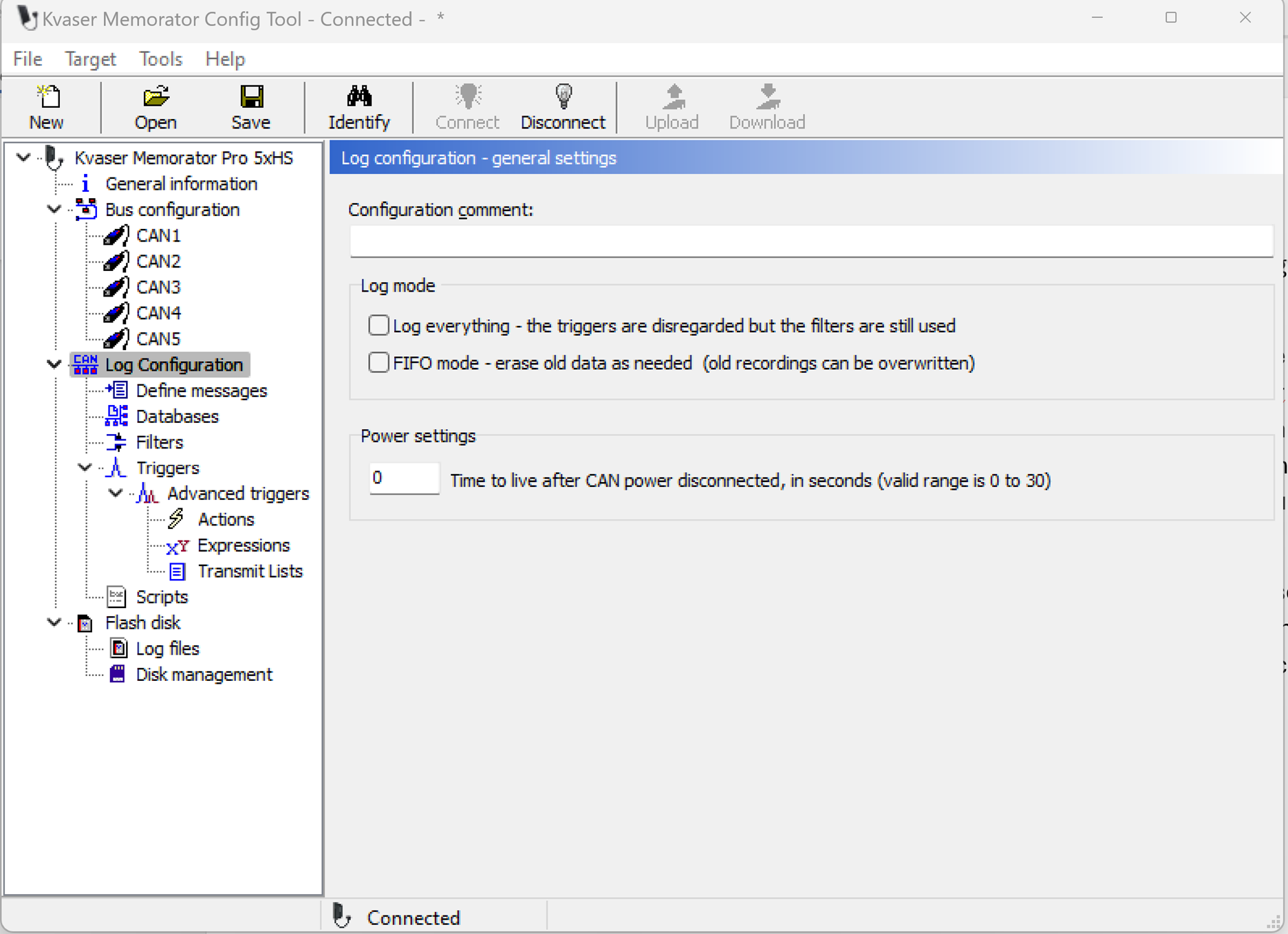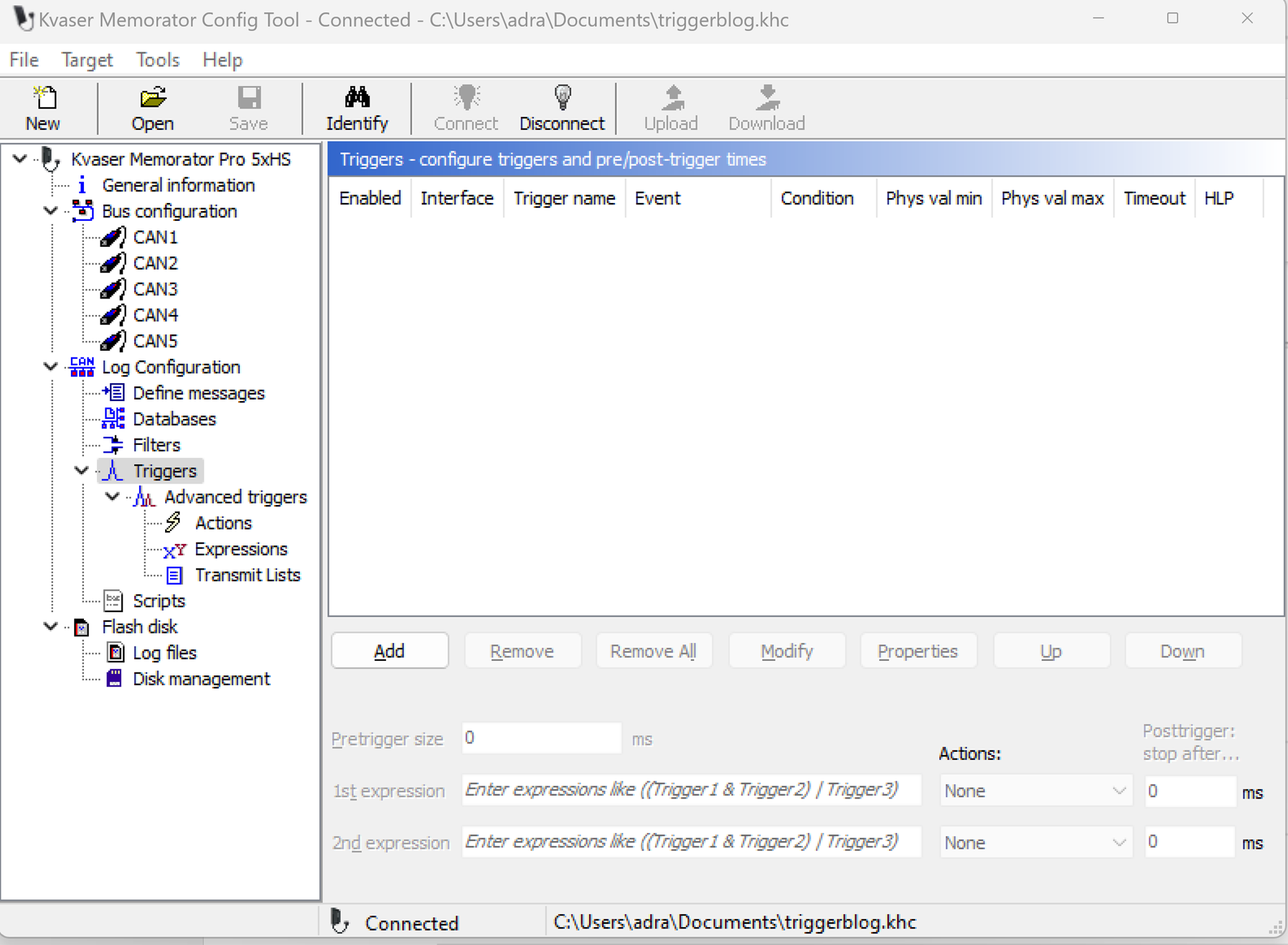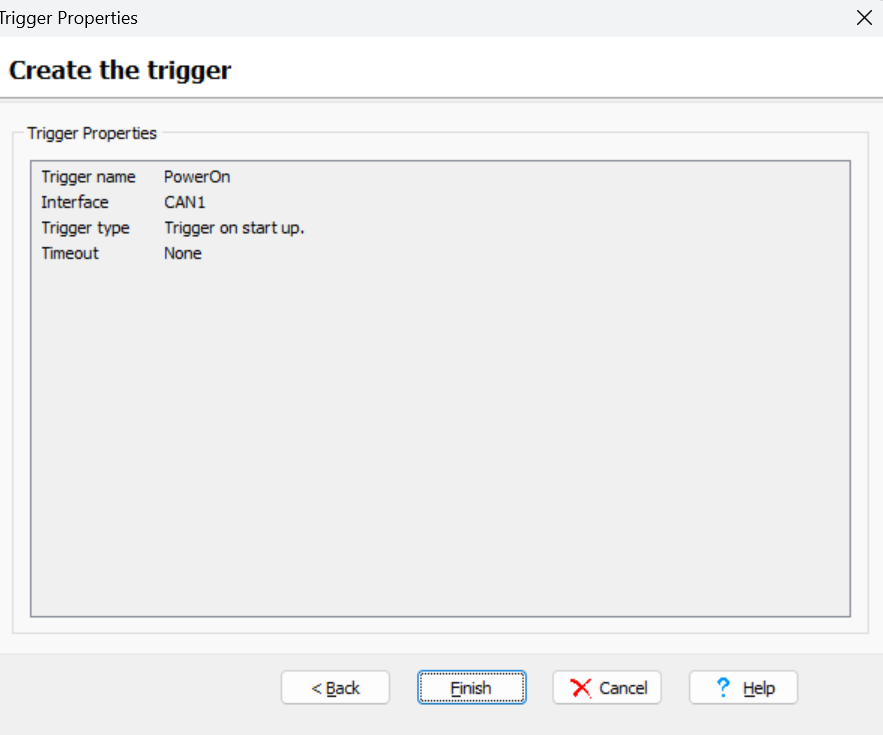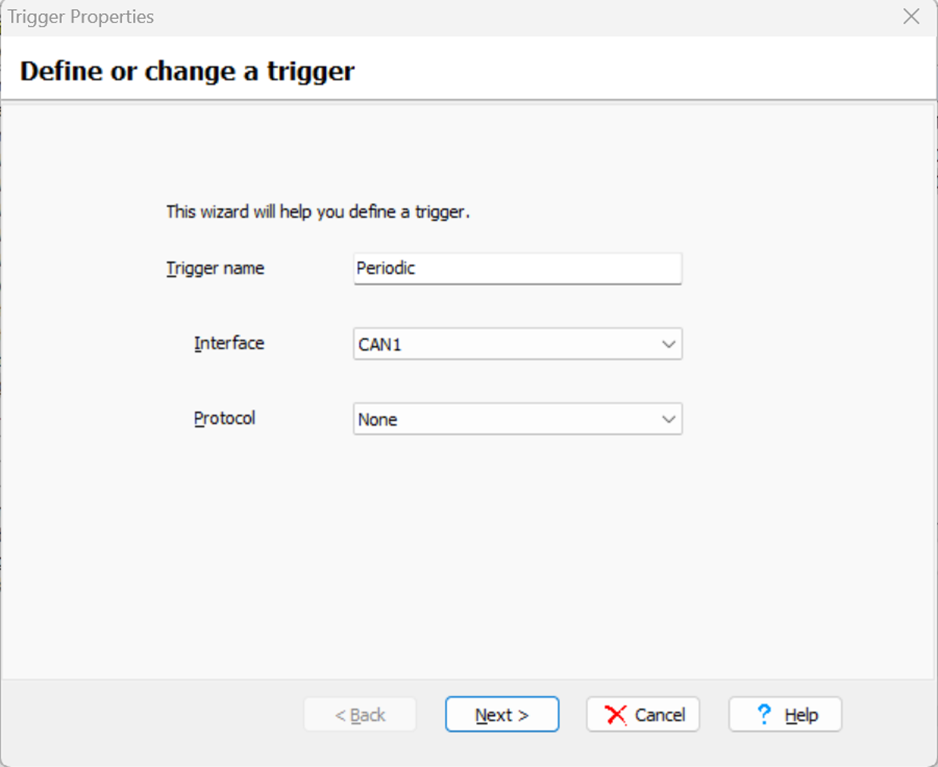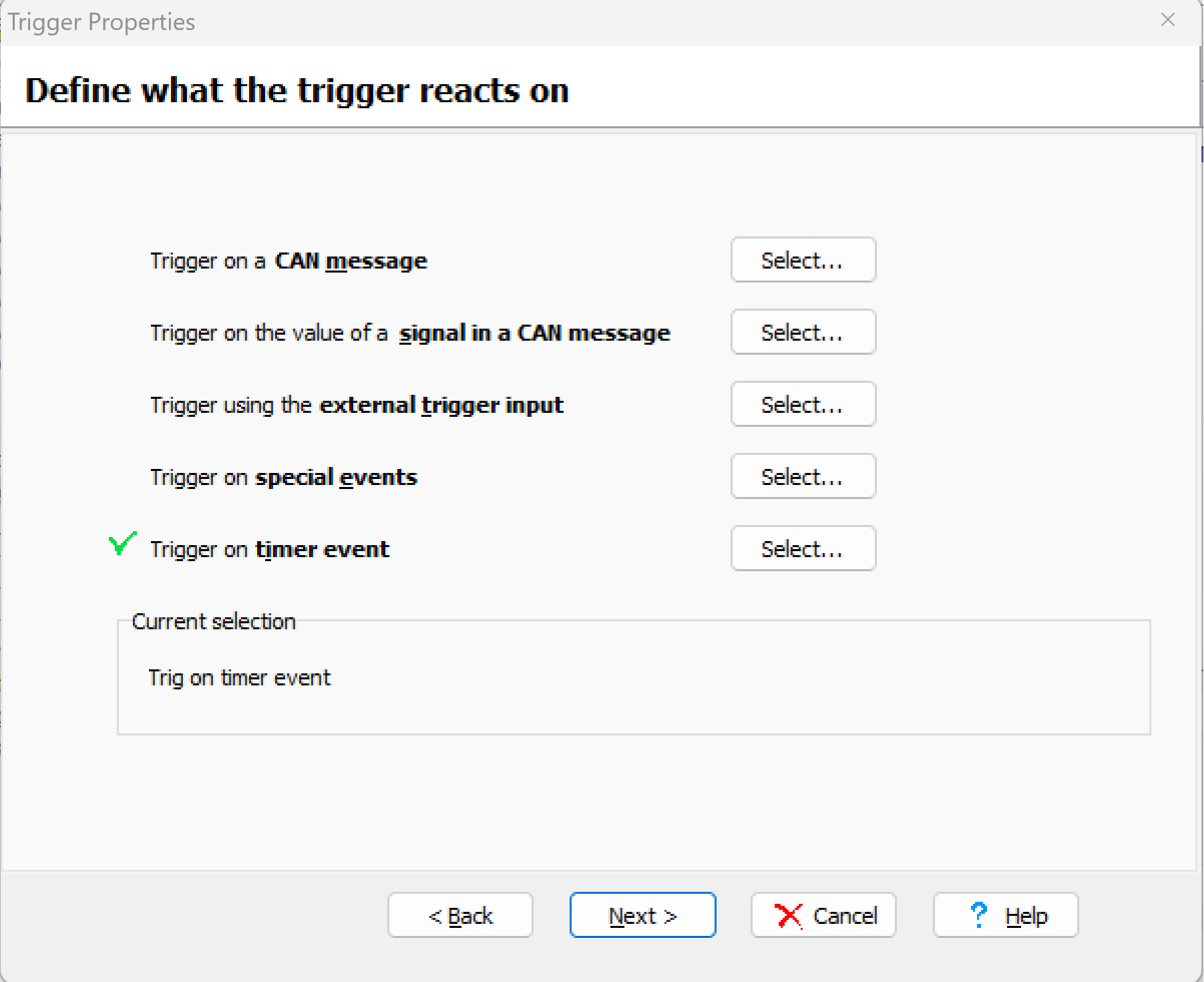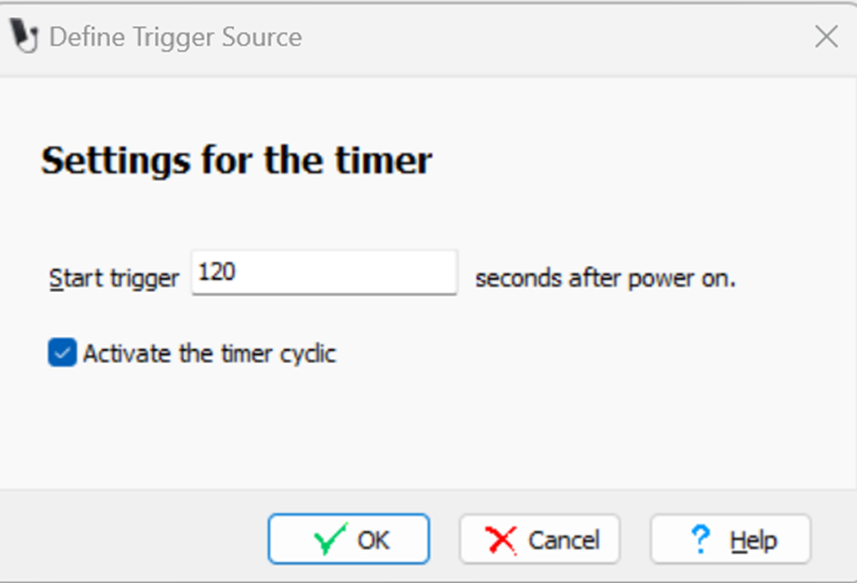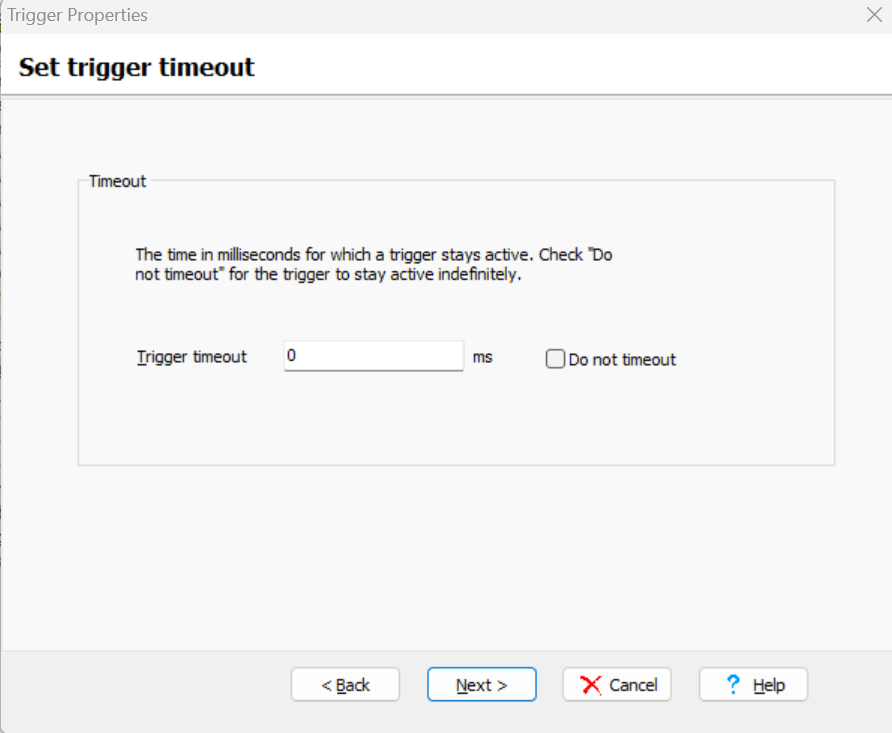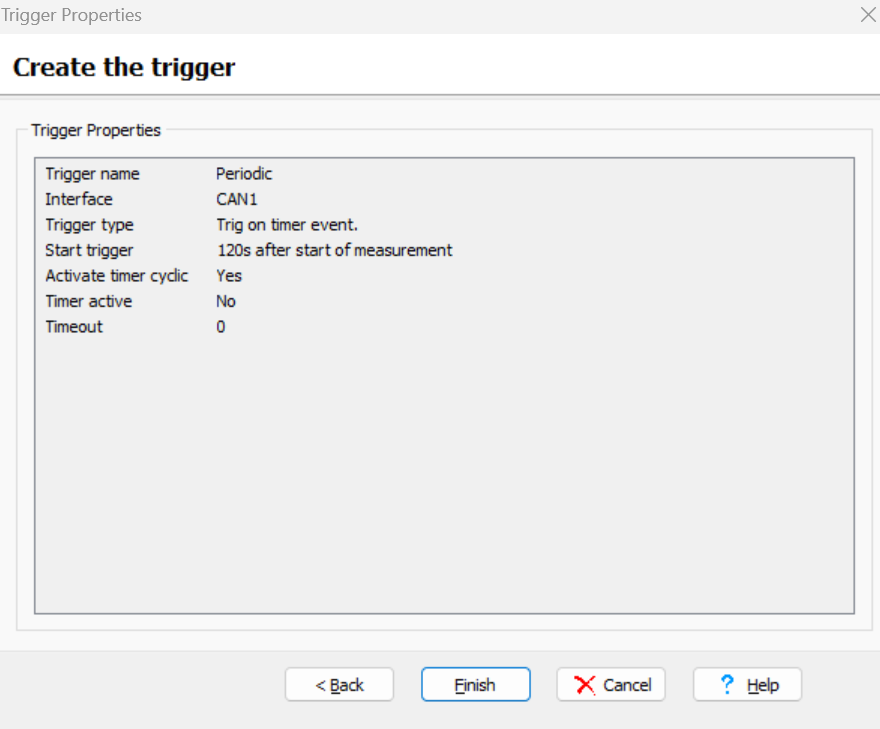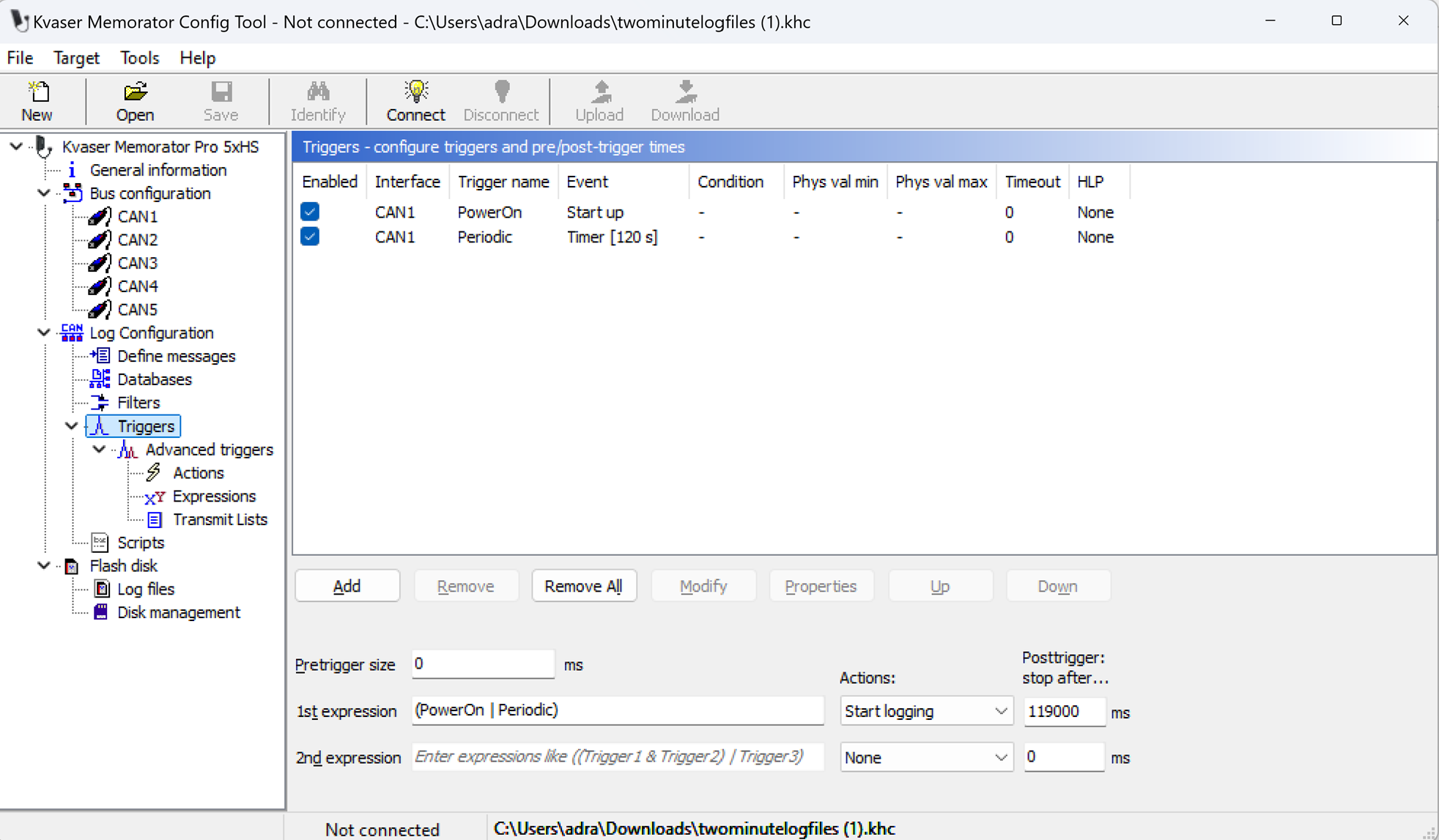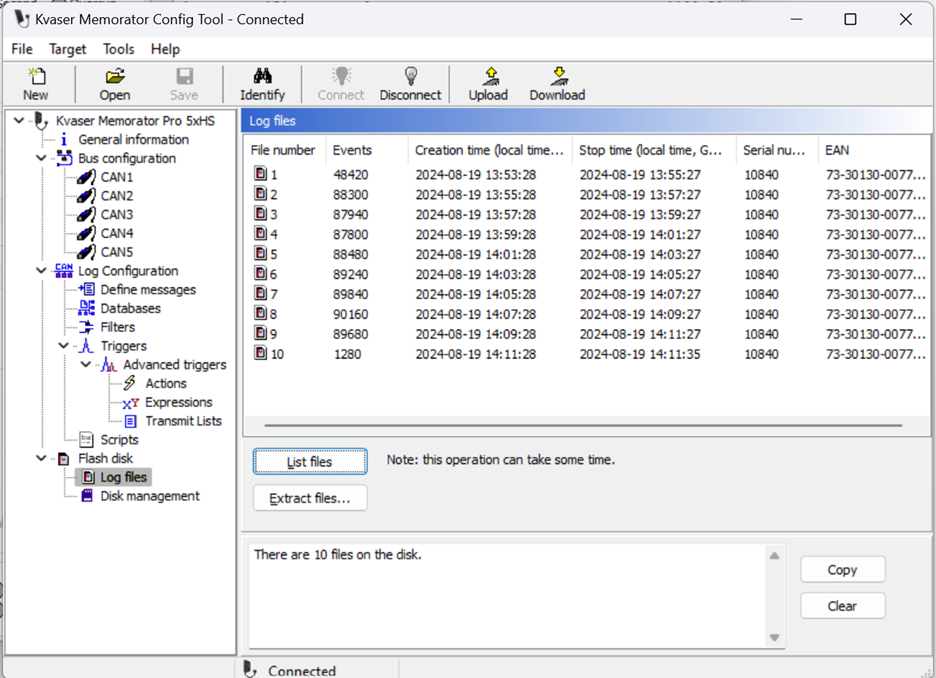If you have a situation where you need to log large amounts of data, it can be cumbersome to extract it all at once. Depending on the amount of data, it may take a long time for a PC to process all the records. Is there a way for the Kvaser Memorator to split the logs by time, keeping the logs in order, and allowing you to extract the data in a certain recorded time frame? There is!
Usually, you would need to wait until the extraction process to split the log into separate files. Sometimes, it may be more convenient to stop logging and restart again, creating separate entries on the SD card. This article will discuss how to do that.
What we will be using are Triggers on the Memorator Pro. Basic Triggers can be used and accessed on the Kvaser Memorator 2xHS v2, Kvaser Memorator Pro 2xHS v2 and Kvaser Memorator Pro 5xHS. For this example, we will split logs for every two minutes of logging.
The first step is to open Kvaser Memorator Config Tools from the Windows Start Menu and choose the Memorator you are using. Connect to your Memorator. If required, sync the Memorator clock with the system and perform any disk maintenance (such as initializing or formatting).
To use Triggers, go to the left side of the Kvaser Memorator Config Tool, under Log Configuration. You will want to that ‘Log Everything – the triggers are disregarded but the filters are still used’ is unchecked. If this box is checked, any trigger you create will not be used. By default, this box is checked.
